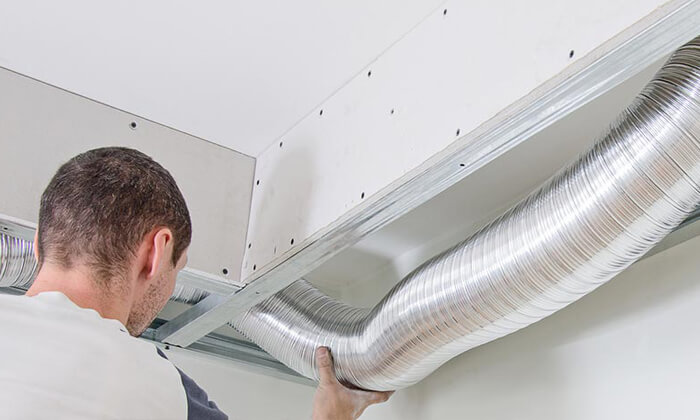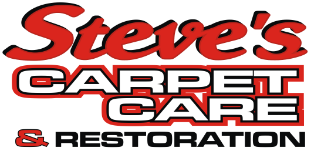
Can you remember the last time you had the dryer vent cleaned? If the answer is “yes” and it’s been more than a year it’s time to have it cleaned again. If the answer is “no” then it’s time to call Steve’s Carpet Care pronto and have one of our highly trained technicians in to thoroughly clean your vent before it’s too late. What do we mean by “too late”? We mean that approximately 17,000 house fires in the U.S. are caused by clogged dryer vents each year. Too many of those fires end in serious injuries and death. As such, dryer vent cleaning is not one of those optional household things, like sealing cracks in the driveway or installing LED lights on the underside of kitchen cabinets. It’s a must.
The Different Kinds of Dryer Vent Tubes
Before dryer ductwork and the dryer vent can be properly cleaned the technician needs to know what kind of dryer vent duct you have. It’s helpful (though not absolutely necessary) if, when you call for dryer vent cleaning, that you know the type of dryer vent you have and relay that to the technician. Here are the 5 types of dryer vents in common use.
- Aluminum foil ducts - Definitely the most popular type of dryer vent hose the aluminum foil duct is flexible, affordable, lightweight and versatile. Unfortunately, it’s also one of the worst kind of ducts when it comes to trapping lint. A large percentage of the house fires we mentioned earlier start in flexible aluminum foil ducts. If you have a flexible aluminum foil vent and it hasn’t been cleaned recently it’s a fire waiting to happen.
- Plastic ducts - Plastic dryer vents look similar to flexible aluminum foil vents but they’re typically white instead of having a shiny metallic finish like aluminum foil. Like aluminum foil vents they also do a bang-up job trapping lint in their many ribs. And that is not a good thing. Plastic vents tend to clog up as fast as aluminum or even faster.
- Slim aluminum ducts - This is a rigid type of dryer vent ductwork with a flattened shape so that it can fit into tight spaces. You won’t find these in many homes although they do pop up here and there in cases when the dryer has been wedged into a particularly confined space. The upside is that they have a smooth interior. The downside is that they can be hard to access.
- Semi-rigid duct - The semi-rigid duct looks more than a little like the aluminum foil dryer vent but it’s not nearly as flexible. It actually occupies a grey area between the rigid aluminum duct and the loosey-goosey aluminum foil vent. The upside to this type of dryer duct is that it is slower to accumulate dryer lint inside. The downside is that they’ll cost more than flexible aluminum or plastic dryer ducts.
- Rigid vents - The rigid dryer vent is most often made of aluminum these days. The upside of rigid metal dryer vents is that the insides are perfectly smooth and it’s harder for lint to accumulate in them. Harder, but it still happens. It just takes a bit longer. Of course, the rigid nature of this type of vent means that you are somewhat limited in how and where you can run them since elbows for such pipes are usually only available with 45 or 90 degree bends.
What Does Vent Cleaning Involve?
Like air duct cleaning, vent cleaning involves scouring the dryer vent and the ductwork leading to it of lint, dirt, dust and other debris and returning it to a pristine state where air can flow smoothly and fire risk is eliminated. When the technician from Steve’s arrives on your property to carry out dryer vent cleaning, they follow a well-established routine:
- They prepare the vent - As is the case with air duct cleaning, dryer vent cleaning can’t take place until the system (in this case the dryer) has been turned off and unplugged. The technician then prepares their tools which typically include various brushes designed specifically to work with the different types of dryer vents.
- They empty the lint screen - Before anything is done to the dryer vent or hose itself the lint screen is removed and thoroughly cleaned. And we mean thoroughly. Every last vestige of lint, dirt and other debris is removed from the screen so it looks as close to new as possible.
- They disconnect the tube/duct - The next step is to disconnect the tube/duct from both the dryer at one end and the vent itself at the other end. Each hose/duct setup is different and may include any of the 5 different hoses described above. The technician will take their time to ensure no neighboring vents, wires, ducts or other objects are negatively affected by the disconnect process.
- They scour the hose and the vent - The technician uses the appropriate brush to clean out the inside of the vent and vent hose until it’s squeaky clean. They’ll also use a vacuum cleaner to remove the last stubborn vestiges of lint, dust and debris from all aspect of the hose and vent cover. When finished they’ll then reassemble the vent/hose and reattach it to the dryer and test it before leaving.
Contact the pros at Steve's Carpet Care today to learn more about dryer vent cleaning.
